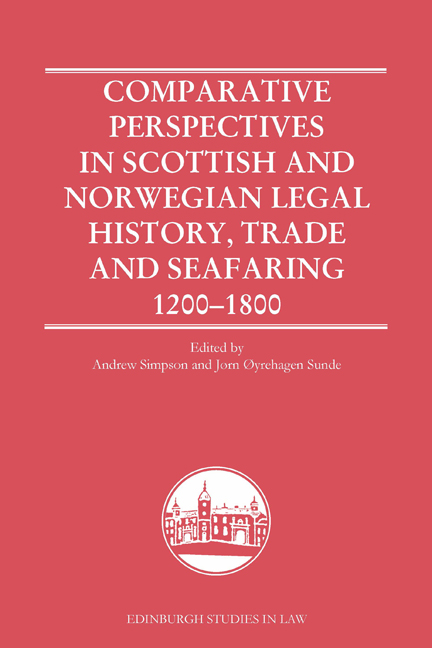4 - Law and Administrative Change in Scotland, Twelfth–Fourteenth Centuries
Published online by Cambridge University Press: 17 November 2023
Summary
A: INTRODUCTION
The history of law and administrative change in Scotland during the central middle ages has, by and large, been understood as a narrative of state formation along what might well be called “the English model”. That is, a single authority (in this case, the king) assumes basic responsibility for and thus capacity to control the mechanisms for dispute settlement that otherwise would have occurred through other means, invoking other forms of power and authority to do so. Institutional development is a necessary corollary of this process: a more standardised system of courts develops in the process of realising and enforcing this responsibility. In central medieval Scotland, the royal judicial system – as opposed to the law upheld and developed within its courts – has (again by and large) traditionally been limited to considering the justice offered in local sheriffdom courts, the touring “ayre” of the justiciar, and the burgh courts, whose profits were collected by the chamberlain in his ayre. These courts and ayres were introduced and developed over the thirteenth century and, for civil pleas, offered litigants the opportunity to initiate their claims in courts by purchasing a “brieve” (Latin: breve, a short formulaic command) from the royal chapel that would then be sent to the official presiding over the court instructing them to open the case on the points and articles of the particular claim as set out in the brieve. Over twenty-five years ago, Hector MacQueen described this development as the “growing regularisation of royal justice”. In this short paper, I will briefly summarise what can be known about law and administration in the medieval kingdom of the Scots. This complicates – even if does not completely challenge – the narrative of the regularisation of justice over the twelfth and thirteenth centuries and raises some issues, particularly about the trajectory of fourteenth-century legal development, which require further discussion and consideration.
B: THE “ENGLISH MODEL”, THE SCOTTISH COMMON LAW AND NORWEGIAN COMPARISONS
Two things are meant by the rather provocative phrase “English model”. First is the long-standing preoccupation of Anglophone historians and historians of England to examine state formation as a process realised through institutional development and bureaucratisation.
- Type
- Chapter
- Information
- Comparative Perspectives in Scottish and Norwegian Legal History, Trade and Seafaring, 1200-1800 , pp. 122 - 154Publisher: Edinburgh University PressPrint publication year: 2023



